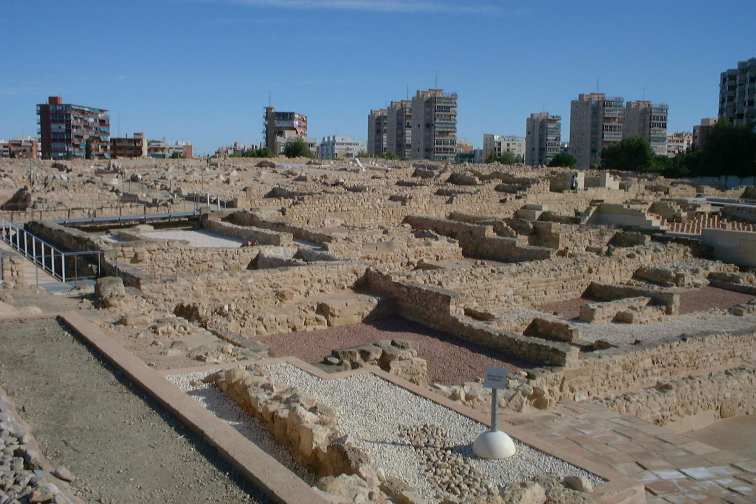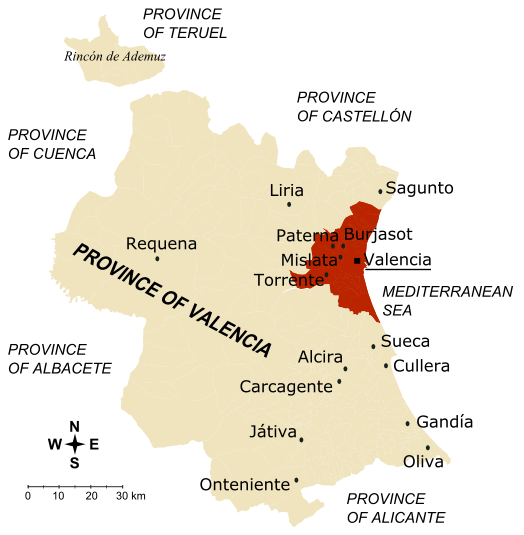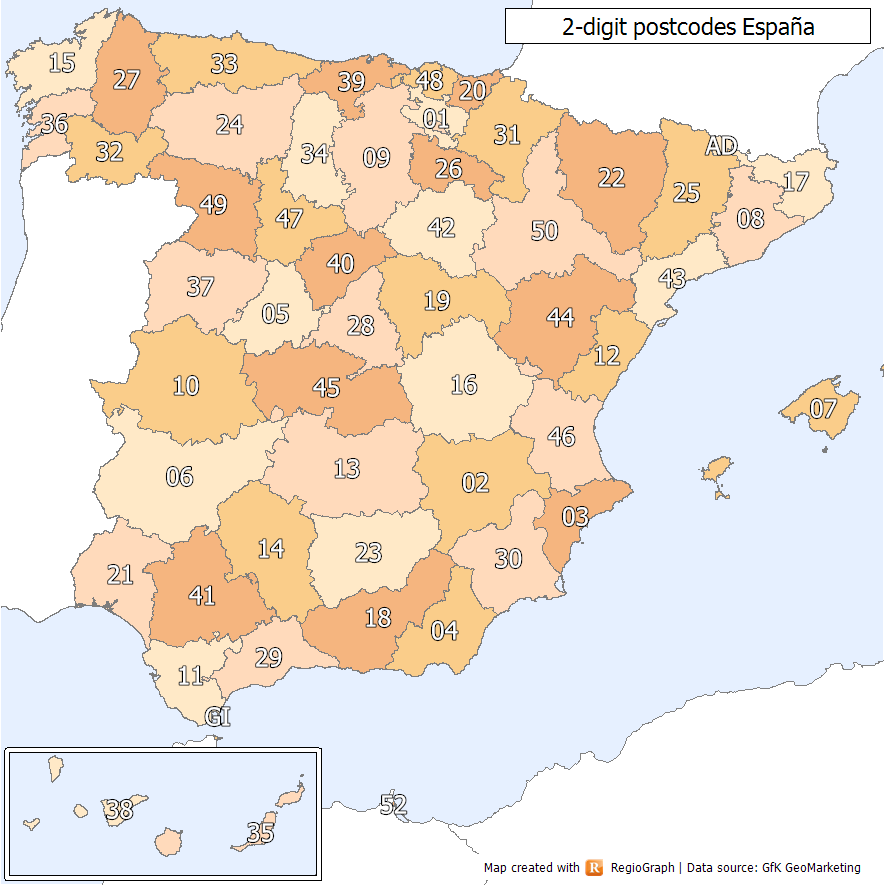|
Montitxelvo
Montitxelvo (), co-officially ''Montichelvo'' (), is a municipality in the ''comarca'' of Vall d'Albaida in the province of Valencia and the Valencian Community, Spain. The municipality spans across a total area of 8.16 km2 and, as of 1 January 2022, it has a registered population of 571. In old sources, the placename is documented as ''Montichervo''. After 1612, the place was ethnic cleansed of ''moriscos'' and resettled by Old Christian Old Christian (, , ) was a social and law-effective category used in the Iberian Peninsula from the late 15th and early 16th century onwards, to distinguish Portuguese and Spanish people attested as having cleanliness of blood, known as Limpieza ...s. References Municipalities in the Province of Valencia {{valencia-geo-stub ... [...More Info...] [...Related Items...] OR: [Wikipedia] [Google] [Baidu] |
Vall D'Albaida
Vall d'Albaida (; ) is a ''Comarques of the Valencian Community, comarca'' in the Provinces of Spain, province of Valencia (province), Valencia, Valencian Community, Spain. Etymology The name of the ''comarca'' is derived from the Hispano-Arabic word ''albáyḍa'', which in turn is derived from the classical Arabic البيضاء (''al-bayḍāʾ'', "The white one" – reference to the white chalk land of the comarca), from which the yellow flowering plant native to the comarca gets its common name Anthyllis cystoides.Arabic language influence on the Spanish language#Lexical influence, Arabic language influence on the Spanish language History Reconquista, Reconquered by the Aragonese king James I of Aragon in the first half of the 13th century it was heavily populated by Muslims until the Expulsion of the Moriscos from the Kingdom of Valencia in 1609. Geography Lying approximately 70 km south of the city of Valencia, Spain, Valencia and covering an area of some 722 ... [...More Info...] [...Related Items...] OR: [Wikipedia] [Google] [Baidu] |
Municipalities Of Spain
The municipality (, , , , , )In other languages of Spain: *Catalan language, Catalan/Valencian (), grammatical number, sing. . *Galician language, Galician () or (), grammatical number, sing. /. *Basque language, Basque (), grammatical number, sing. . *Asturian language, Asturian (), grammatical number, sing. . is one of the two fundamental territorial divisions in Spain, the other being the Provinces of Spain, provinces. Organisation Although provinces of Spain, provinces are groupings of municipality, municipalities, there is no implied hierarchy or primacy of one over the other. Instead the two entities are defined according to the authority or jurisdiction of each (). Some autonomous communities also group municipalities into entities known as ''comarcas of Spain, comarcas'' (districts) or ''mancomunidades'' (commonwealths). The governing body in most municipalities is called ''Ayuntamiento (Spain), ayuntamiento'' (municipal council or municipal corporation, corpora ... [...More Info...] [...Related Items...] OR: [Wikipedia] [Google] [Baidu] |
Telephone Numbers In Spain
The Spanish telephone numbering plan is the allocation of telephone numbers in Spain. It was previously regulated by the Comisión del Mercado de las Telecomunicaciones (CMT), but is now regulated by the Comisión Nacional de los Mercados y la Competencia (CNMC). History Before 1998, local telephone calls could be made using only the subscriber's number without the area code, while the trunk code '9' was omitted when calling from outside Spain, e.g.: xx xx xx (within the same province) 9xx xxx xxx (within Spain) +34 xx xxx xxx (outside Spain) International calls were made by dialling the international access code 07, waiting for a tone, and then dialling the country code. However, calls to Gibraltar were made using the prefix '956' for the province of Cádiz, followed by the digit '7', instead of the country code +350, e.g.: 7 xx xxx (from Cádiz) 956 7 xx xxx (from the rest of Spain) Similarly, calls to Andorra were made using the prefix '973' fo ... [...More Info...] [...Related Items...] OR: [Wikipedia] [Google] [Baidu] |
Morisco
''Moriscos'' (, ; ; "Moorish") were former Muslims and their descendants whom the Catholic Church and Habsburg Spain commanded to forcibly convert to Christianity or face compulsory exile after Spain outlawed Islam. Spain had a sizeable Muslim population, the '' mudéjars'', in the early 16th century. The Iberian Union mistrusted Moriscos and feared that they would prompt new invasions from the Ottoman Empire after the Fall of Constantinople, so between 1609 and 1614 they began to expel them systematically from the various kingdoms of the Union. The most severe expulsions occurred in the eastern Kingdom of Valencia. The exact number of Moriscos present in Spain before the expulsion is unknown and can only be guessed based on official records of the edict of expulsion. Furthermore, the overall number who were able to avoid deportation is also unknown, with estimates on the proportion of those who avoided expulsion or returned to Spain ranging from 5% to 40%.Trevor J. Dadson' ... [...More Info...] [...Related Items...] OR: [Wikipedia] [Google] [Baidu] |
Ministry Of Economy (Spain)
The Ministry of Economy, Trade and Enterprise (MINECO) is the Spanish government departments, department of the Government of Spain responsible for proposing and carrying out the government policy on Economy, economic affairs, through reforms to improve competitiveness and trade, focused on business support and the potential growth of the economy. At the same time, it directs the commercial policy of internationalization of companies, as well as the supervision of investments and foreign transactions. As the main Council of Ministers (Spain), Cabinet department responsible for the economic policy, it is also the ministry in charge of the proper functioning of the oldest and most relevant Government Delegated Committees, Delegated Committee, the Government Delegated Committee for Economic Affairs (CDGAE), a collective body of the Government in charge of guaranteeing the full coordination and coherence of the government policies with the economic policy. The Economy Minister chair ... [...More Info...] [...Related Items...] OR: [Wikipedia] [Google] [Baidu] |
Valencia (autonomous Community)
The Valencian Community is an autonomous community of Spain. It is the fourth most populous Spanish autonomous community after Andalusia, Catalonia and the Community of Madrid with more than five million inhabitants.Instituto Nacional de Estadística, Madrid, 2020. Its eponymous capital Valencia is the third largest city and metropolitan area in Spain. It is located along the Mediterranean coast on the east side of the Iberian Peninsula. It borders Catalonia to the north, Aragon and Castilla–La Mancha to the west, and Murcia to the south, and the Balearic Islands are to its east. The Valencian Community is divided into three provinces: Castellón, Valencia and Alicante. According to Valencia's Statute of Autonomy, the Valencian people are a '' "historical nationality"''. Their origins date back to the 1238 Aragonese conquest of the Taifa of Valencia. The newly-founded Kingdom of Valencia enjoyed its own legal entity and administrative institutions as a component of the Crow ... [...More Info...] [...Related Items...] OR: [Wikipedia] [Google] [Baidu] |
Province Of Valencia
Valencia ( , ), officially València (), is a provinces of Spain, province of Spain, in the central part of the autonomous Valencian Community. Of the province's 2.7 million people (2024), almost one-third live in the capital, Valencia, which is also the capital of the autonomous community and the list of metropolitan areas in Spain, 3rd biggest city in Spain, with a metropolitan area of 2,522,383 people it is also one of the most populated cities of Southern Europe. There are 265 List of municipalities in Valencia, municipalities in the province. History Although the Spanish Constitution of 1812 loosely created the province of València, a stable administrative entity does not arise until the territorial division of Spain in 1833, remaining today without major changes. The Provincial Council of Valencia dates from that period. After the Valencian Statute of Autonomy of 1982, the province became part of the Valencian Community. Valencian language, Valencian and Spanish langua ... [...More Info...] [...Related Items...] OR: [Wikipedia] [Google] [Baidu] |
Comarques Of The Valencian Community
The ''Comarcas of Spain, comarques'' of the Valencian Community form an intermediate level of administrative subdivision between Municipalities of Spain, municipalities and Provinces of Spain, provinces. They are used as a basis for the provision of local services by the Generalitat Valenciana, but do not have any representative or executive bodies of their own. In 1987, the Generalitat Valenciana published an official proposal for Homologated Territorial Demarcations, ''Demarcacions Territorials Homologades'' (DTH), of three degrees, where the first degree largely coincides with the territorial concept of ''comarca''. Until now, the practice of these demarcations has been limited as a reference to the administrative decentralisation of the different services offered by the Generalitat, such as education, health, or agriculture. In fact, there is no legal provision for these DTHs to ultimately have the intended “territorial impact”, that is, comarca-level political or administ ... [...More Info...] [...Related Items...] OR: [Wikipedia] [Google] [Baidu] |
Boletín Oficial Del Estado
The (''BOE''; "", from 1661 to 1936 known as the ''Gaceta de Madrid'', "") is the official gazette of the Spain, Kingdom of Spain and may be published on any day of the week. The content of the ''BOE'' is authorized and published by Royal Assent and with approval from the Ministry of the Presidency (Spain), Spanish Presidency Office. The ''BOE'' publishes decrees by the , Spain's Parliament (comprising the Spanish Senate, Senate and the Congress of Deputies) as well as those orders enacted by the Spanish Autonomous Communities. The Spanish Constitution of 1978 provides in Article 9.3 that "The Constitution guarantees ... the publication of laws." This includes the official publishing of all Spanish judicial, royal and national governmental decrees, as well as any orders by the Council of Ministers. According to Royal Decree 181/2008 [...More Info...] [...Related Items...] OR: [Wikipedia] [Google] [Baidu] |
Alcalde
''Alcalde'' (; ) is the traditional Spanish municipal magistrate, who had both judicial and Administration (government), administrative functions. An ''alcalde'' was, in the absence of a corregidor (position), corregidor, the presiding officer of the Crown of Castile, Castilian ''Cabildo (council), cabildo'' (the municipal council) and judge of first instance of a town. ''Alcaldes'' were elected annually, without the right to reelection for two or three years, by the ''regidores'' (council members) of the municipal council. The office of the ''alcalde'' was signified by a staff of office, which they were to take with them when doing their business. A woman who holds the office is termed an ''alcaldesa''. In New Spain (Mexico), ''alcaldes mayores'' were chief administrators in colonial-era administrative territories termed ''alcaldías mayores''; in colonial-era Peru the units were called ''corregimientos''. ''Alcalde'' was also a title given to Indigenous peoples of the America ... [...More Info...] [...Related Items...] OR: [Wikipedia] [Google] [Baidu] |
Central European Summer Time
Central European Summer Time (CEST, UTC+02:00), sometimes referred to as Central European Daylight Time (CEDT), is the standard clock time observed during the period of summer daylight-saving in those European countries which observe Central European Time (CET; UTC+01:00) during the other part of the year. It corresponds to UTC+02:00, which makes it the same as Eastern European Time, Central Africa Time, South African Standard Time, Egypt Standard Time and Kaliningrad Time in Russia. Names Other names which have been applied to Central European Summer Time are Middle European Summer Time (MEST), Central European Daylight Saving Time (CEDT), and Bravo Time (after the second letter of the NATO phonetic alphabet). Period of observation Since 1996, European Summer Time has been observed between 01:00 UTC (02:00 CET and 03:00 CEST) on the last Sunday of March, and 01:00 UTC on the last Sunday of October; previously the rules were not uniform across the European Union. The ... [...More Info...] [...Related Items...] OR: [Wikipedia] [Google] [Baidu] |
List Of Postal Codes In Spain
Spanish postal codes were introduced on 1 July 1984, when the introduced automated mail sorting. They consist of five numerical digits, where the first two digits, ranging 01 to 52, correspond either to one of the 50 provinces of Spain or to one of the two autonomous cities on the African coast. Two-digit prefixes The first two digits of a Spanish postal code identify the province or autonomous city it belongs to. The numbers were assigned to the 50 provinces of Spain ordered alphabetically at the time of implementation. The official names of some of the provinces have since changed, either to the regional language version of the name (e.g. from the Spanish to the Basque ) or to adopt the name of the autonomous community instead of the provincial capital (e.g. Santander to Cantabria). In these cases, the originally assigned code has been maintained, resulting in some exceptions to the alphabetical order. In addition, Ceuta and Melilla were originally included within the ... [...More Info...] [...Related Items...] OR: [Wikipedia] [Google] [Baidu] |




